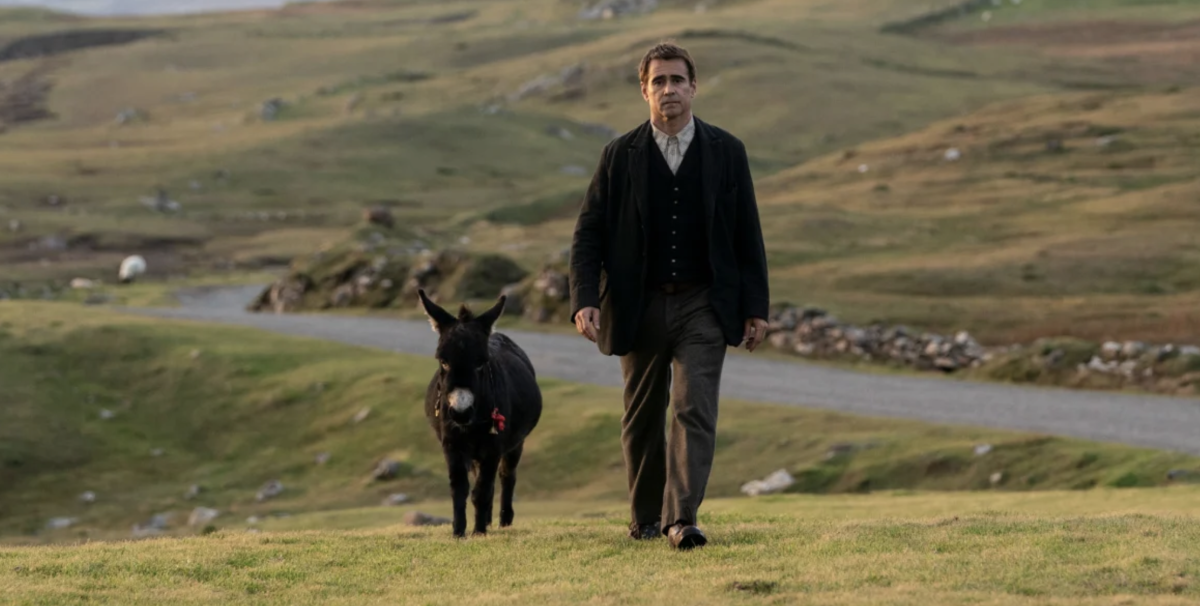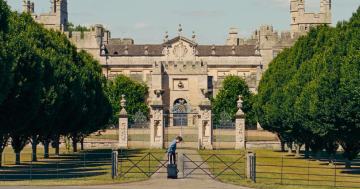
Colin Farell as Padraic in The Banshees of Inisherin. Photo: File.
Before we discuss The Banshees of Inisherin, there’s something we need to get out of the way first.
If you’ve been to the movies anytime in the past three to six months there’s a strong chance you’ve seen the trailer starring Brendan Gleeson as Colm and Colin Farrell as Padraic. The darkly delicious humour in the shorts is the only humour in the entire work.
The trailer does allude to some black reflective moments because this is a film of great complexity, asking important questions about friendship, isolation and despair.
The Banshees of Inisherin begins with Colm’s decision that an enduring friendship with Padraic is at an end. His explanation is that he finds the friendship essentially shallow and meaningless and he doesn’t want his younger friend to speak to him ever again.
Colm is a fiddle player, he’s working on his enduring folk piece and doesn’t want to be interrupted by the vagaries of Padraig’s niceness, a euphemism hinting that he’s a bit simple and dreary. Neither of these are true, as we later discover.
Things start turning south when the elder Colm says every time Padraig speaks to him, he will sever one of his fingers.
No one really believes him but there is a certain melancholy or even a quiet madness about Colm that makes you wonder why he has turned on Padraic like this. This leaves the younger man struggling to understand the turn of events.
Into this mix is Paddy’s despairing and lonely sister who cannot understand what is happening, the local policeman’s son, who cuts a figure of the hopelessly misunderstood, and his father who is a brutal local force with no sense of compassion or fairness.
As the first graphic event unfolds we realise that Colm clearly means what he has threatened. As the viewer tries to make sense of this, we also realise this is a path which may have no end other than in the fiercest of terms.
Irish filmmaker Martin McDonagh has tested his audiences before with films such as In Bruges and Three Billboards Outside Ebbing Missouri and is here almost occupying the space of his brother John Michael McDonagh (The Guard, Calvary).
The film is set in 1923 when Ireland is embroiled in internal conflict. Inisherin is a small island off the mainland; explosions and gunfire are a constant reminder that death is not far away. As Colm continues to make good on his promises and Padraic tests his resolve, death is much closer than we could have imagined. But it doesn’t come from where you’d expect it.
McDonagh wants to challenge us on why friendships can simply collapse, what happens to the human heart when this happens, and how an act of selfish narcissism can trigger a series of events that are easily avoided.
Colm’s musical magnum opus was to be called the ‘Banshees of Inisherin’. But instead of the Banshees wailing, as they do in Irish myth, he hints they are languishing and allowing events to unfold, almost with their blessing.
And this is where McDonagh leaves us with this puzzle to unfold – why and how did these things happen and what utter madness could have created such an atmosphere?
Farrell and Gleeson, of course, are both in top form, and the political shift between them throughout the film is spellbinding. The supporting cast, especially Padraic’s sister Siobhan played by Kerry Condon and Dominic (the policeman’s son) played by Barry Keoghan add layers of complexity to this film.
As with all his work, Martin McDonagh holds the human condition up to the refracted light of the strangeness, hubris and loneliness human beings can experience, often all at once. He asks questions that really only we can answer and even then not always. The Banshees of Inisherin gets four out of five stars.
The Banshees of Inisherin is screening at major cinemas.
Marcus Kelson is a Canberra writer and film critic














